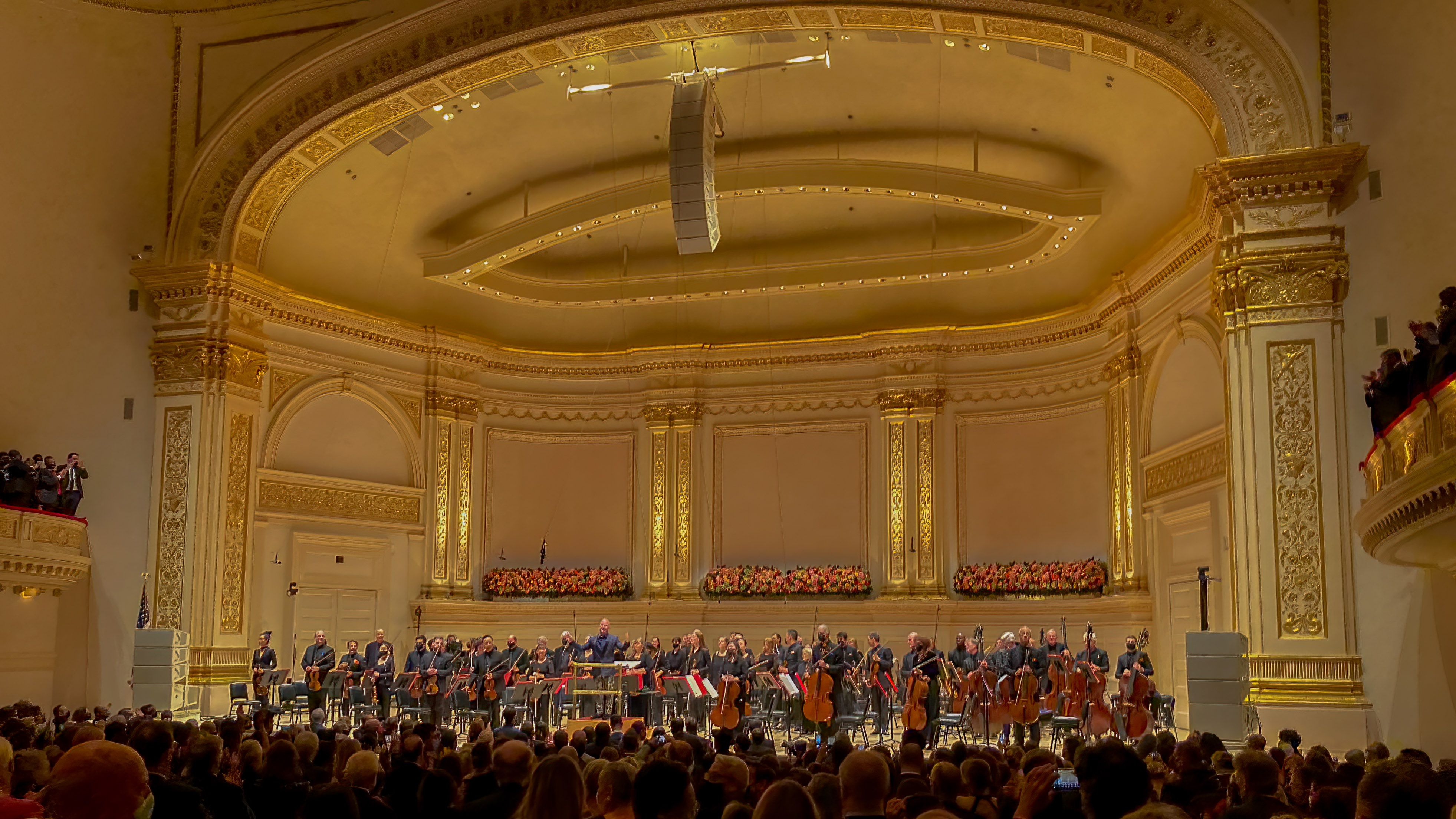The shock of the 5th
How do you shock an audience with a performance of Beethoven’s 5th? It is the most often performed symphony, by the most often performed composer of symphonies, its opening notes perhaps the most recognized theme in all of classical music. So, how do you make that sound fresh, and relevant? Last night, at Carnegie Hall’s opening night concert, Yannick Nézet-Séguin and the Philadelphia Orchestra showed us one way to do it, quite convincingly. The final two works on the program were Imam Habibi’s Jeder Baum spricht, and the 5th. The Orchestra commissioned Habibi (b. 1985) to write a companion piece and overture to Beethoven’s 5th and 6th symphonies. The title refers to a passage in one of Beethoven’s diaries from 1815:
Allmächtiger im Walde! Ich bin selig, glücklich im Wald; jeder Baum spricht durch dich. O Gott! Welche Herrlichkeit! In einer solchen Waldgegend, in den Höhen ist Ruhe, Ruhe, ihm zu dienen.
(Almighty in the forest! I am blessed, happy in the forest; every tree speaks through you. O God! What glory! In such a forest, in the heights is peace, tranquility, to serve him.)
And so, inspired by Beethoven’s vision of the trees speaking through God (and not, interestingly, the other way around), Habibi’s piece is a reflection and call to action on the climate crisis facing our planet. The piece contains echoes of both the 5th and the 6th: the storm scene, motivic allusions—including that very famous one—and is scored for the same forces as in the 5th. Habibi builds to a stunning cadence in Bb major, and then comes the shock: Beethoven’s 5th is played—attacca subito—on the final notes of Habibi’s piece.
There were actually some gasps in the audience!
So now Nézet-Séguin and the Orchestra have completely re-framed the opening of the 5th. It was really quite brilliant, as if a bridge was created across the more than two hundred years separating the two pieces. This framing also solves a musical conundrum, namely, what to do with that opening phrase? I was brought up on the heavy German guys, whose interpretation of the 5th (especially, for example, Klemperer’s) evokes the image of a lone genius on the podium, taking a solemn moment to contemplate fate, and then, forcefully comes that knock. Does it start on an upbeat? “No, you fool, that is an illusory anacrusis!” Nézet-Séguin did away with all that and launched into the piece with no fuss. If anything, Nézet-Séguin’s interpretation treated the first three movements lightly, giving the effect of three movements collectively acting as an anacrusis to the triumphal fourth, thus extending the opening motive across the entire span of the piece.
The premiere of Jeder Baum spricht, together with Beethoven's 5th and 6th can be viewed here.
Nézet-Séguin and the Philadelphia Orchestra will be returning over the coming weeks to complete the Beethoven symphony cycle, which had originally been planned for 2020, and then subsequently cancelled.
A welcome return
The evening began with a piece by Valerie Coleman (b. 1970). Seven O'Clock Shout hearkens back to the days of COVID-19 lockdown, and the nightly 7:00 pm cheers for healthcare and frontline workers. The piece was also commissioned by the Philadelphia Orchestra who, astonishingly, gave Coleman only two weeks to complete it! (Coleman had previously been commissioned by the orchestra for their season opening concert in 2019. This ultra brief commissioning period demonstrates a profound mutual respect and trust that must have developed through that first commission.) The piece was commissioned in lockdown, and premiered in lockdown, with each musician recording their performance solo, the whole brought together in a video. Fanfares lead to lush Debussy-esque passages, to a rollicking 7:00 pm cheers.
Mid-century modern
Two pieces from the mid ‘50s formed the middle of the program. Dmitri Shostakovich’s Piano Concerto No. 2 was performed with Yuja Wang as the soloist. This was my first time seeing Wang perform live. I had been unsure of what exactly to expect from her playing, but am happy to report that she gave a nuanced, technically flawless performance, without any kind of bombast or theatrics. The audience loved it and went fairly wild at the end.
(We noticed that Yuja Wang had something red on her right arm, but from our seats, we couldn't make out what it was. Looking at the video of the concert, now I see that it was a temporary tattoo of the new Carnegie Hall logo! A very nice touch.)
Next up was Leonard Bernstein’s overture to Candide. This piece is a staple of orchestral repertoire, and for good reason—it’s brilliant, the tunes are great, it’s brief. At its conclusion, I whispered to Nora, “Now that’s an overture!” Nora told me later one of the tunes was actually used as the theme music to The Dick Cavett Show!
Necessary precautions
Carnegie Hall should be commended for taking several steps to reduce the risk of COVID-19 spread. All concert-goers had to show proof of vaccination status, along with photo ID, in order to enter the hall. Ticket holders were directed to specific entrances, with a specific early entry time, in order to reduce congestion. Masks were required for everyone in the audience (they were optional for the performers, and several wore them), and this was actually enforced by the ushers. I suspect that the ushers were monitoring the audience using video cameras, because several times an usher would rush up from the back of the hall to tell someone to mask up. I have to say this was all very welcome.
You can watch the entire opening night concert here:
